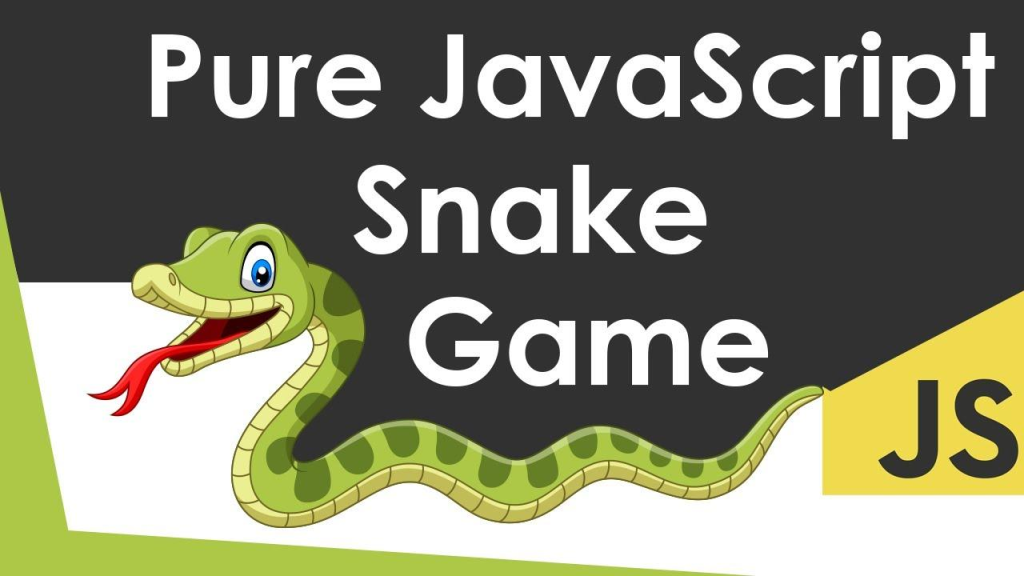Few games have stood the test of time like the classic Snake. From the small screens of old mobile phones to modern web browsers, the appeal of guiding a growing snake to collect food never fades. The simple mechanics, combined with an ever-increasing challenge, make Snake a perfect example of gameplay that is both addictive and satisfying. Reviving this classic in a modern programming language like JavaScript not only rekindles nostalgia but also offers an excellent opportunity for developers to sharpen their coding skills. If you are considering building snake game in JavaScript, you’re stepping into a world of creative possibilities.
Why JavaScript is Ideal for Snake
JavaScript has become the backbone of interactive web applications, and it’s perfectly suited for games like Snake. With its robust event handling, smooth animation capabilities, and easy DOM manipulation, JavaScript allows you to create a seamless gaming experience directly in the browser. By leveraging the HTML5 <canvas> element, developers can draw and animate the snake and food with precision. This combination of simplicity and power makes JavaScript an ideal choice for anyone interested in building snake game projects that are both fun and educational.
Planning Your Snake Game
Before diving into code, it’s crucial to plan your game structure. Think of the snake as an array of coordinates, each representing a segment of its body. The food is a point that appears at random locations on the canvas. The game loop controls movement, checks for collisions, and updates the score. By outlining these components clearly, you ensure that the coding process is smooth and logical. Planning in advance not only reduces errors but also allows you to add creative twists, such as special power-ups or obstacles, later on.
Setting Up the Game Canvas
The first step in building snake game in JavaScript is setting up the HTML and canvas. The canvas acts as your game board. You define its width and height and style it to suit your design preferences. JavaScript will interact with this canvas to draw the snake, food, and other elements. It’s essential to consider grid size here, as it determines the smoothness of snake movement and collision detection. A well-set canvas ensures that gameplay is fluid and responsive, providing a satisfying experience for players.
Creating the Snake
The snake itself can be represented as an array of objects, each containing x and y coordinates. Initially, the snake may start with just a few segments, but it grows each time it eats food. By using functions to move the snake, detect collisions, and handle growth, you create a dynamic system that feels alive. Animation can be enhanced with CSS or JavaScript timing functions to ensure smooth motion. A well-implemented snake makes the game not only playable but also visually appealing, inviting players to keep coming back for higher scores.
Handling User Input
Control is everything in a game like Snake. JavaScript makes it easy to capture keyboard events, allowing players to direct the snake’s movement with arrow keys or WASD. Handling input efficiently ensures the snake responds immediately, making gameplay satisfying. Additionally, you can implement logic to prevent the snake from reversing into itself, which adds a layer of challenge. This attention to detail transforms your game from a simple prototype into a fully enjoyable experience.
Implementing Food and Scoring
The main objective of Snake is to collect food, which in turn grows the snake and increases the player’s score. JavaScript allows you to randomly place food on the canvas while checking to ensure it doesn’t appear on the snake’s body. A scoring system keeps players engaged, rewarding them for their skill and strategy. Adding visual or audio cues when the snake eats food enhances feedback, making the game more immersive. Thoughtful scoring mechanics can turn a basic Snake clone into a game players will love to master.
Detecting Collisions
Collision detection is the backbone of Snake gameplay. You need to detect when the snake hits the canvas boundaries or collides with itself. JavaScript provides simple ways to compare coordinates, ensuring accurate detection. Proper collision handling defines when the game ends, making each move meaningful. By incorporating subtle animations or sound effects upon collision, you can elevate the player experience, making the game both challenging and entertaining.
Game Loop and Animation
The game loop ties everything together. It continuously updates the snake’s position, redraws the canvas, checks for collisions, and manages scoring. In JavaScript, this can be accomplished using setInterval or requestAnimationFrame for smoother performance. A well-tuned game loop ensures that the snake moves fluidly, responds to input, and provides a consistently fun experience. Mastering the game loop is a critical step for anyone serious about building snake game projects that feel professional.
Adding Difficulty Levels
To keep players engaged, consider adding difficulty levels. You can increase the snake’s speed, introduce obstacles, or modify food behavior as the player progresses. JavaScript allows dynamic adjustment of game variables, making it easy to implement such challenges. Difficulty scaling not only increases replay value but also tests the player’s reflexes and strategic thinking. This small tweak can transform a simple project into a fully replayable game that maintains the classic charm of Snake while introducing modern gameplay elements.
Enhancing Graphics and Style
While classic Snake relies on simple shapes, modern versions can benefit from enhanced visuals. JavaScript and CSS together can create gradient effects, shadows, and animations that make the game visually appealing. Even subtle touches like highlighting the snake’s head or adding particle effects when food is consumed can elevate the overall experience. Investing in the look and feel ensures that your Snake game isn’t just functional—it’s enjoyable to watch and play.
Sound Effects and Music
Adding sound effects and background music is an excellent way to make your Snake game immersive. JavaScript can handle audio playback for events like eating food, colliding, or leveling up. Carefully selected sounds enhance feedback and make gameplay more engaging. Music can also set the pace, subtly influencing the player’s focus and excitement. Sound design, though often overlooked, is an essential component for anyone serious about creating a polished and enjoyable Snake game.
Saving High Scores
High score tracking adds a competitive edge to your game. JavaScript can interact with browser storage to save scores locally, allowing players to see their progress over time. You can even implement leaderboards or challenges to motivate players to improve. This feature increases replayability, encouraging players to engage with your game repeatedly. By integrating score tracking seamlessly, you create a more rewarding and interactive experience.
Testing and Debugging
No game is complete without thorough testing. Debugging JavaScript can involve checking for collision accuracy, ensuring the snake grows correctly, and verifying that controls are responsive. Testing different screen sizes and devices is also important, as it ensures your game works smoothly for everyone. A well-tested Snake game demonstrates professionalism and attention to detail, making it more enjoyable and reliable.
Learning Opportunities
Building a Snake game in JavaScript is not just about fun—it’s also a powerful learning experience. You develop skills in array manipulation, event handling, collision detection, animation, and user interface design. For beginners, it’s a manageable yet challenging project that teaches fundamental programming concepts. For experienced developers, it’s an opportunity to experiment with new features or advanced mechanics. Every iteration you create makes you a more confident and capable coder.
Sharing Your Game
Once your Snake game is complete, sharing it with others can be incredibly rewarding. You can host it on a personal website, share it on GitHub, or even create a small social media challenge. Feedback from players helps you refine mechanics, improve visuals, and understand what makes the game enjoyable. Sharing also provides motivation, as seeing others enjoy your creation is immensely satisfying. Your project may inspire others to try building snake game themselves, spreading the joy of coding and retro gaming.
Conclusion: Classic Fun Meets Modern Coding
Reviving the classic Snake game in JavaScript bridges nostalgia with modern development skills. From designing the canvas to handling collisions, scoring, and animation, every step offers a chance to learn and innovate. By incorporating enhanced graphics, sound, difficulty levels, and high-score tracking, you create a version of Snake that’s both timeless and fresh. For developers, it’s a perfect project to explore creativity, improve coding proficiency, and share a beloved game with a new generation of players. Building snake game in JavaScript is more than just a project—it’s a journey through coding, design, and the joy of gameplay that never goes out of style.






![‘Frankenstein’ Review – Guillermo del Toro’s Definitive Look At The Nature And Nurture Of Monstrosity [TIFF 2025] ‘Frankenstein’ Review – Guillermo del Toro’s Definitive Look At The Nature And Nurture Of Monstrosity [TIFF 2025]](https://cdn.geekvibesnation.com/wp-media-folder-geek-vibes-nation/wp-content/uploads/2025/10/Frankenstein-175_PF_20240430_20377_R-300x200.jpg)